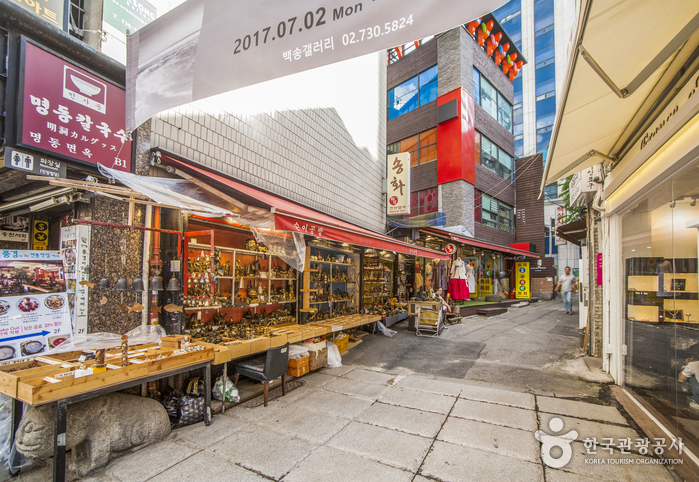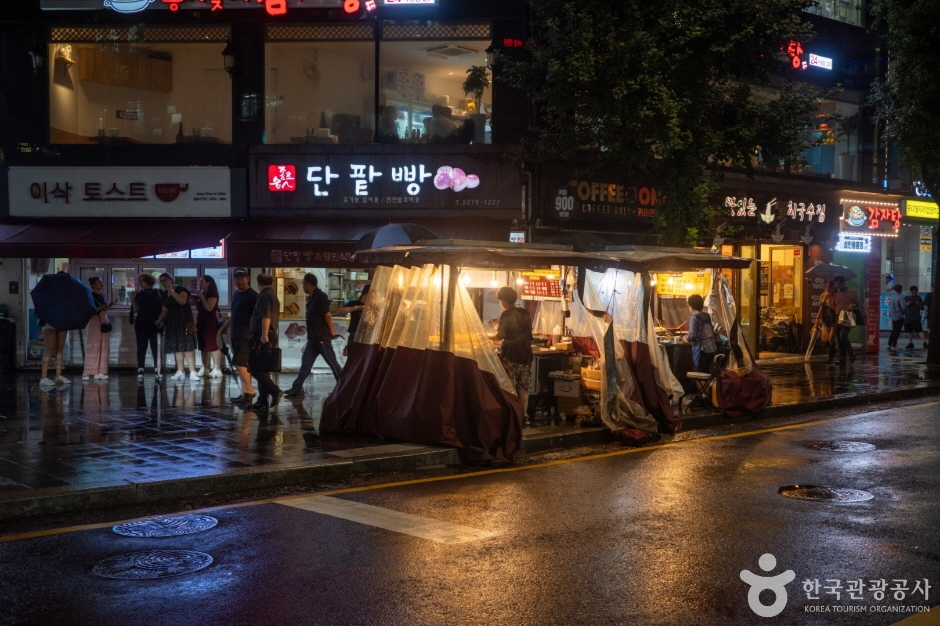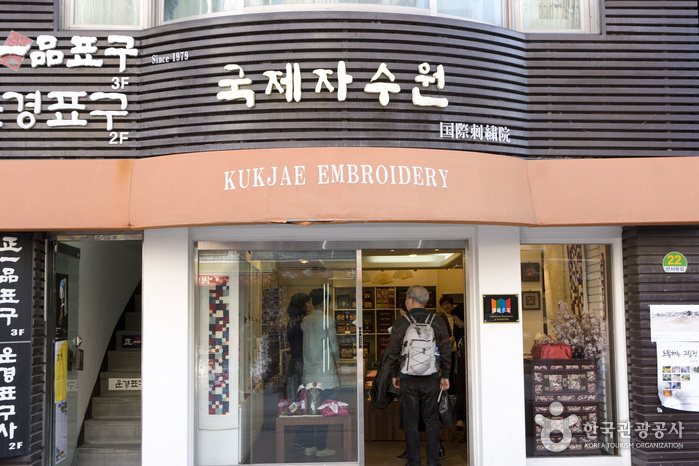Insa-dong Traditional Culture Festival (인사전통문화축제)
1.2Km 2022-10-27
49 , Insadong-gil, Jongno-gu, Seoul
• 1330 Travel Hotline: +82-2-1330 (Korean, English, Japanese, Chinese) • For more info: +82-2-737-7890
Celebrated annually since 1987, Insa-dong Traditional Culture Festival is a feast of Korean culture and art, hosted by the Traditional Culture Preservation Society and the Ministry of Culture, Sports, and Tourism. The festival features an international folk festival, parade, and singing contest. Street events include ceramic art demonstrations, portrait drawings by street artists, and making traditional rice cakes.
Line Friends - Insa Branch [Tax Refund Shop] (라인프렌즈 인사점)
1.2Km 2024-04-16
49, Insadong-gil, Jongno-gu, Seoul
-
KongKongY Gallery [Tax Refund Shop] (콩콩이 그림가게)
1.2Km 2024-04-19
Store #325, 3F, 49, Insadong-gil, Jongno-gu, Seoul
-
Bachi Ring (UMC Jewelry) [Tax Refund Shop] (바치링(UMC쥬얼리))
1.2Km 2024-04-19
#414, 49, Insadong-gil, Jongno-gu, Seoul
-
Insa-dong Antique Art Street (인사동 고미술거리)
1.2Km 2025-03-16
29 Insadong-gil, Jongno-gu, Seoul
+82-2-732-2235
As of today, there are approximately 70 shops in the Insa-dong area that sell antique arts. Some of the products they sell include antique artworks, porcelains, woodcrafts, and metalwork. Visitors may even find rare and valuable products such as earthenware from the Silla period or white porcelain used in the Joseon dynasty. Each shop is a specialty store, authorized to sell product types that are of their expertise, ranging from antique furniture and traditional artworks to handcrafted items.
Gwanghwamun Gate (광화문)
1.2Km 2024-12-04
161 Sajik-ro, Jongno-gu, Seoul
+82-2-3700-3900
Built in 1395 under the reign of King Taejo, the first king of the Joseon dynasty, Gwanghwamun Gate is the southern gate of Gyeongbokgung Palace. It is also the main gate of the palace, therefore larger and fancier in comparison to the other gates. Gwanghwamun Gate consists of three arched gates; the center gate was used by the king, while the other two were used by the crown prince and royal officials. The tall granite walls of the gate serve as a platform for the wooden gate tower that watches over the city. The gate has a sign with its name written at the top center of the gate tower.
Gwanghwamun Gate went through several damages and restorations over the course of history. It was first severely damaged during the Imjin War (1592-1598) and was not restored until the reconstruction of Gyeongbokgung Palace in 1864. Under the Japanese administration, the gate was demolished and relocated to the north of the palace's eastern gate, followed by series of damages during the Korean War (1950-1953). In 1968, Gwanghwamun Gate was relocated back to the south of the palace and was rebuilt using concrete; however, the gate’s position was shifted a few meters away from its original location. In 2006, a major reconstruction project took place to restore Gwanghwamun Gate to its original state and location, disassembling the structure completely and replacing concrete with granite and wood. After three years and eight months of construction, Gwanghwamun Gate was fully restored to its original form and was open to the public on August 15, 2010.
Jongno 3 (sam)-ga Pocha Street (종로3가 포장마차 거리)
1.2Km 2025-03-15
12-1, Gwan-su-dong, Jongno-gu, Seoul
It is one of Seoul's representative Pocha Streets boasting history and tradition. When you come out of Jongno 3-ga Station, exit 6 (toward the Nakwon Music Mall), you will find a lot of food stalls with a crowded atmosphere. There are vinyl covered areas and open areas, so you can choose according to your taste. It is a heaven for snacks such as Chicken feet, Octopus, Udon Kimchi Pancakes, and Rolled Omelet.
Gukje Embroidery - Insa-dong Branch (국제자수원 3호점 (인사동))
1.2Km 2020-05-07
41, Insadong-gil, Jongno-gu, Seoul
+82-2-723-0830
Opened in 1979, Kukjae Embroidery specializes in embroidered crafts using traditional Korean patterns. Every product is delicately and elegantly crafted by master artisans. Kukjae Embroidery is known as a frequent destination of foreign dignitaries. It offers a seminar where international tourists can learn how to make embroidered crafts.
![Nike [Tax Refund Shop] (나이키)](http://tong.visitkorea.or.kr/cms/resource/82/3313582_image2_1.jpg)
![Kangol [Tax Refund Shop] (캉골)](http://tong.visitkorea.or.kr/cms/resource/75/3312975_image2_1.jpg)




 English
English
 한국어
한국어 日本語
日本語 中文(简体)
中文(简体) Deutsch
Deutsch Français
Français Español
Español Русский
Русский